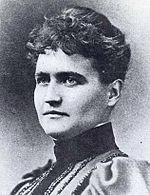How to Pronounce Eliza Ruhamah Scidmore
#50
Most Popular
Boost
Oct 14, 1856 Clinton, Iowa, United States Died on 03 Nov 1928 (aged 72)
American writer and photographer
LibraEliza Ruhamah Scidmore, Date of Birth, Place of Birth, Family, Facts, Age, Net Worth, Biography and More in FamedBorn.com

American writer and photographer
Libra